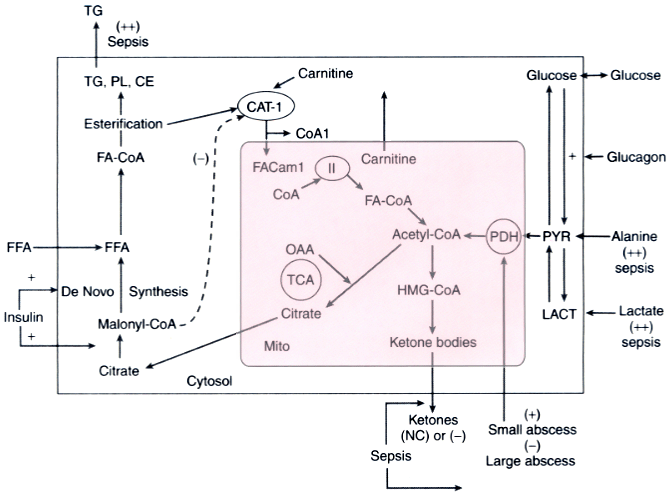 |
 |
Figure 77-19
Septic alteration of metabolic regulation of hepatic
fatty acid oxidation, ketogenesis, fatty acid synthesis, and carbohydrate metabolism.
Malonyl CoA (dotted line) derived from citrate and
cytosolic acetyl CoA inhibits carnitine:acyl CoA transferase I. (carnitine:acyl
CoA transferases [I and II] are bound to inner mitochondrial membrane in vivo, but
for clarity, the reactions are shown away from the membrane.) Hormones (i.e., insulin
or glucagon) and small and large septic abscesses can increase (+) or inhibit (-)
particular synthetic pathways or oxidation of specific substrates. CAT-1, carnitine:acyl
CoA transferase I; CE, cholesterol esters; CoA, coenzyme A; FA-CoA, long-chain fatty
acyl CoA; FACarn, long-chain fatty acyl carnitine; FFA, long-chain fatty acids; HMG-CoA,
β-hydroxy-β-methyl glutaryl-CoA; LACT, lactate; Mito, mitochondria; OAA,
oxaloacetate; PDH, pyruvate dehydrogenase complex; PL, phospholipids; PYR, pyruvate;
TCA, tricarboxylic cycle; TG, triglycerides; II, carnitine:acyl transferase II.
(Adapted from Vary TC, Siegel JH, Nakatani T, et al: A biochemical basis
for depressed ketogenesis in sepsis. J Trauma 26:419, 1986.)

 |
